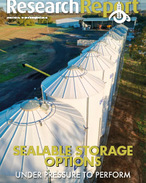This article is 4 years old. Images might not display.
Contracting production in the US, one of the world's most influential markets as a major producer, consumer, importer, and exporter of beef, would alter global trade flows and have implications for other trade exposed beef nations, including Australia.
The report said while US beef production is forecast to be down 2.5 per cent in 2022, with increased cow slaughter due to continuing concerns about drought and the availability and price of feed, US beef exports are still expected to remain strong.
The contraction in the size of the US cattle herd had accelerated in 2021, due to poor economics and drought liquidation across the western US.
For the year to date, US beef cow slaughter has been up 10 per cent and dairy cow slaughter up 2 per cent, for a combined increase of 6 per cent.
Despite the contracting production and strong domestic consumer demand, the US has moved from being a new imported to a new exporter of beef.
Rabobank senior animal proteins analyst Angus Gidley-Baird said US beef exports are forecast to increase by 2 to 4 per cent in 2022.
"Markets in Japan, South Korea, Mexico and Canada continue to remain for US beef, but it is the growth in exports to China that is driving the rising US export volumes, with China now the third largest export destination for the United States," Gidley-Baird said.
US beef exports to China rose to 29,000 metric tons in September, up from 19,000 metric tons in March. Australia beef exports to China in September came in at 12,345 metric tons shipped weight (swt).
"The growth in US beef exports to China had been supported by limited export supply out of Australia, due to the herd rebuild process and reduced cow slaughter, along with disruption to export supply from Argentina and Brazil and a growing demand for high-quality beef in China," Gidley-Baird said.
The expansion of US beef exports into China is set to stay, with the US meeting China's growing demand for higher-quality beef.
"With strong domestic beef prices in the US, along with contracting US beef production and growth into the Chinese market, competition for US beef is expected to remain strong and keep prices firm. This will set a benchmark in the global market, with strong prices further compounded by ongoing limited supplies from Australia and current disruption to export from Brazil and Argentina," Gidley-Baird said.
For Australia, the Beef Quarterly report said, forecasts for favourable season conditions in the coming months would support strength in producer demand and provide support for young cattle prices.























